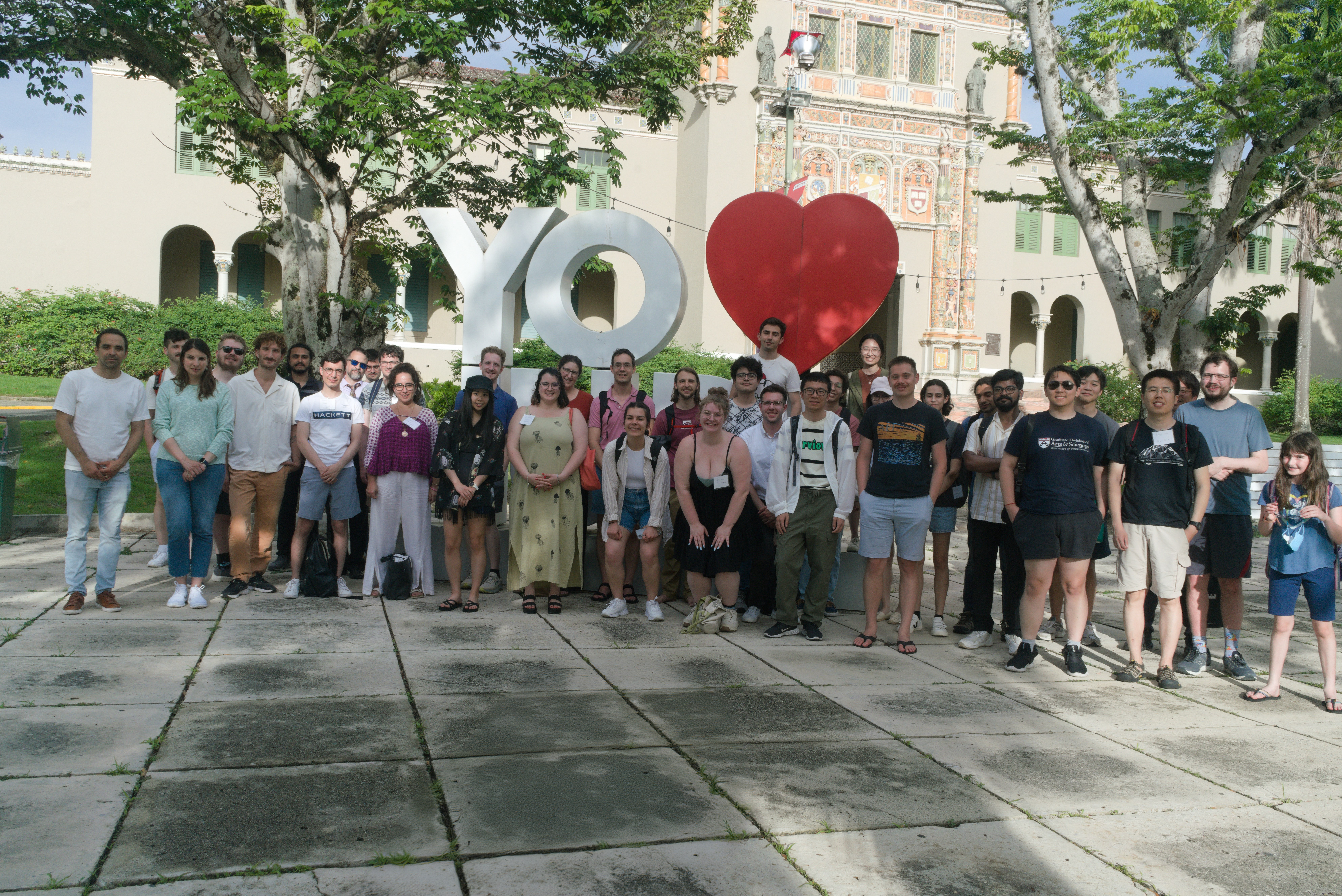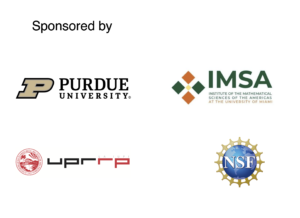

The Algebraic Structures in Topology ![]() is a conference series that meets every two years in San Juan, Puerto Rico and is partially supported by the National Science Foundation
is a conference series that meets every two years in San Juan, Puerto Rico and is partially supported by the National Science Foundation ![]() , Purdue University
, Purdue University ![]() , the Institute of the Mathematical Sciences of the Americas at the University of Miami
, the Institute of the Mathematical Sciences of the Americas at the University of Miami ![]() , and the University of Puerto Rico at Rio Piedras. The conferences will feature a variety of events focusing on recent developments in algebraic topology and their applications to geometry, physics, and data science.
, and the University of Puerto Rico at Rio Piedras. The conferences will feature a variety of events focusing on recent developments in algebraic topology and their applications to geometry, physics, and data science.
The next iteration of the series will occur on June 5 – June 14, 2024. This event will have three parts. The first part will take place from June 5th to June 7th and it will feature three introductory mini-courses on the topics of configuration spaces, algebraic K-theory, and string topology accessible to graduate students and researchers in related fields outside algebraic topology. The mini-courses will be held at Romm A-211 in the Natural Sciences building of the University of Puerto Rico at Rio Piedras.
Florian Naef (Trinity College Dublin): String topology
Abstract: String topology can be thought of as the study of operations on the free loop space of a manifold. The operations are of the type of cutting loops at intersections and regluing them in a different pattern. Since these operations are expected to be defined using transverse intersection, a question that arises is concerning their invariance. That is, what type of maps between manifolds (ranging from homotopy equivalences to diffeomorphisms) intertwine these operations. One approach to study this question, is to try and define the string topology operations more algebraically and identify what the precise input into the algebraic machinery is. In this mini-course we will see a glimpse that this question is related to configuration spaces of points and to algebraic K-theory of spaces.
- Talk 1: We will roughly follow the historical discovery of string topology by studying loops on surfaces. Namely, from the Atiyah-Bott symplectic structure on the moduli of flat connections we discover the Goldman bracket and its close relative the Turaev cobracket. We will then try and generalize these formulas to manifolds of arbitrary dimension.
- Talk 2: There are (at least) two algebraic models for the homology (or cohomology) of the free loop space, either as Hochschild homology of chains on the based loop space or as Hochschild homology of the cochain algebra. In the latter case (restricted to simply connected spaces), thanks to a strictification result of Lambrechts-Stanley, it is much easier to write down algebraic operations which should correspond to string topology. When trying to define the loop coproduct Hochschild homology of chains on the based loop space we will discover that additional data is needed.
- Talk 3: We will discuss how the loop coproduct is not a homotopy invariant, but sees the trace of the underlying simple homotopy type.
Ben Knudsen (Northeastern University): Configuration spaces
Abstract: Configuration spaces have been a central concern in topology and many other areas for 60 years and counting. The aim of these lectures is to provide a user’s guide to these spaces, detailing five basic answers to the following pragmatic question: given that configuration spaces are interesting, how do we go about studying them? After focusing initially on the manifold setting, and given time, we will describe in the third lecture how these answers do and do not apply to configuration spaces of graphs.
Teena Gerhardt (Michigan State University): Algebraic K-theory
Abstract: Algebraic K-theory is an invariant of rings and ring spectra which illustrates a fascinating interplay between algebra and topology. Defined using topological tools, this invariant has important applications to algebraic geometry, number theory, and geometric topology. One fruitful approach to studying algebraic K-theory is via trace maps, relating algebraic K-theory to (topological) Hochschild homology, and (topological) cyclic homology. In this mini-course I will introduce algebraic K-theory and trace methods, and discuss important recent advances in this area.
- Talk 1: In this talk I’ll answer the question: What is algebraic K-theory, and why are people interested in it? I’ll define algebraic K-theory, and discuss applications of algebraic K-theory to several areas of mathematics.
- Talk 2: In this talk I will introduce the trace method approach to studying algebraic K-theory. We will discuss (topological) Hochschild homology and (topological) cyclic homology, and how they can help us understand algebraic K-theory.
- Talk 3: This talk will be a further exploration of trace methods, discussing how this approach can facilitate computations of algebraic K-theory groups. We will discuss cyclotomic structures, topological cyclic homology, and computational approaches for K-theory.
[pdf-embedder url=”https://math.uprrp.edu/wp-content/uploads/2024/06/mini_courses_schedule.pdf”]
